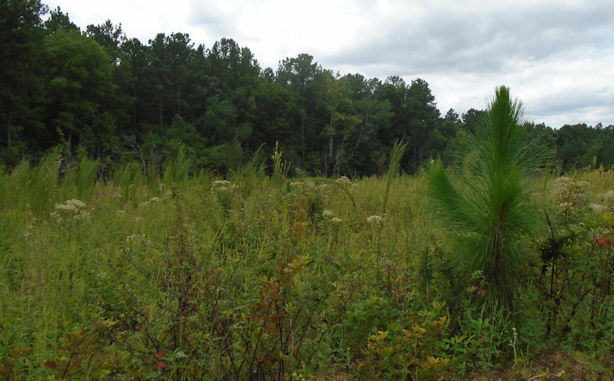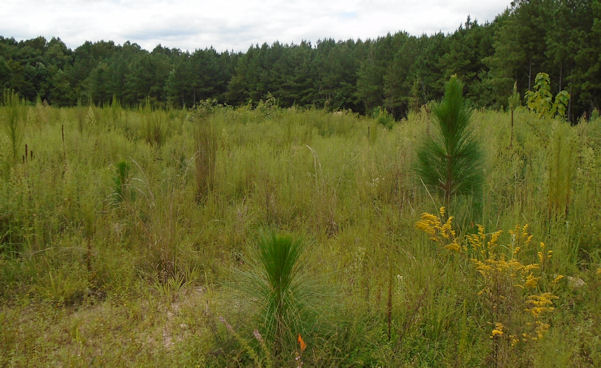
Longleaf pine was much more common in Virginia and the South in 1607 than it is today. It is the classic southern pine and was a prime timber tree in the colonies and was important to the Royal Navy as a source of naval stores (pitch, tar, resin and turpentine). It is a big and beautiful tree.

But it can be harder to grow because it requires fire to keep a longleaf pine forest healthy. Fire in forests is less common today. We put them out when they get near our buildings and roads tend to limit the extent of fires. Before European settlement, Native Americans started fires all the time. They didn’t have the capacity to put them out when they got big and with no roads to stop them they burned large areas. The Native Americans also used fire to spook that animal in hunting and to keep down the population of bugs near their villages. America was a smokey place. European sailors commented that they could smell the smoke before they saw the coast.
Fire often kills broad leaf trees and brush but southern pine is adapted to it. The fires were common, but because they were common they tended not to get hot enough to be the disaster we often see today. Longleaf and other southern pine prospered. When fires were suppressed, the forests became denser, shadier and dominated by other species. In addition, foresters often prefer loblolly pine to longleaf because it is easier to grow and more developed genetically. For these many reasons, longleaf is rarer than it was.
There is no chance that longleaf will disappear. It is not in any way an endangered species. But it is still a good idea to encourage longleaf. It increases forest diversity and provides an interesting landscape that favors particular wildlife species.
The problem for any mortal individual, me included, is that trees take a long time to grow. When I plant longleaf today, I can be certain that I will not live to a mature forest. Of course, everybody is always in that position and if nobody planted trees that he could not personally see mature, nobody would plant any trees.
We put in longleaf on a five acres a couple years ago. (I plan to put in more longleaf on maybe 50 acres of one of our other farms in 2016, after we clear cut the mature lobolly that is now there.) My friends and neighbors prepared the land burning the land before planting, recreating the conditions the pines need. You can see from the pictures that some of the pines are doing okay. I will see in a few years how well they will do. They are pretty trees, even at the smaller stage. Loblolly have filled in by natural regeneration. We will be seeing a mixed loblolly-longleaf forest, much like you might have found in 1607. I will have to burn under the trees to make it right. I hope and believe I will live long enough to do that once or twice. After that, it belongs to the kids.
In my pictures you can see the little longleaf pines. It is hard to see some of them in the grass. I am not sure how to handle this. I read that a quick and cool fire will take care of this and it is part of longleaf management, but I want to ask actually fire practiti0ners. Things on the ground don’t always work the same way the books say they will.
